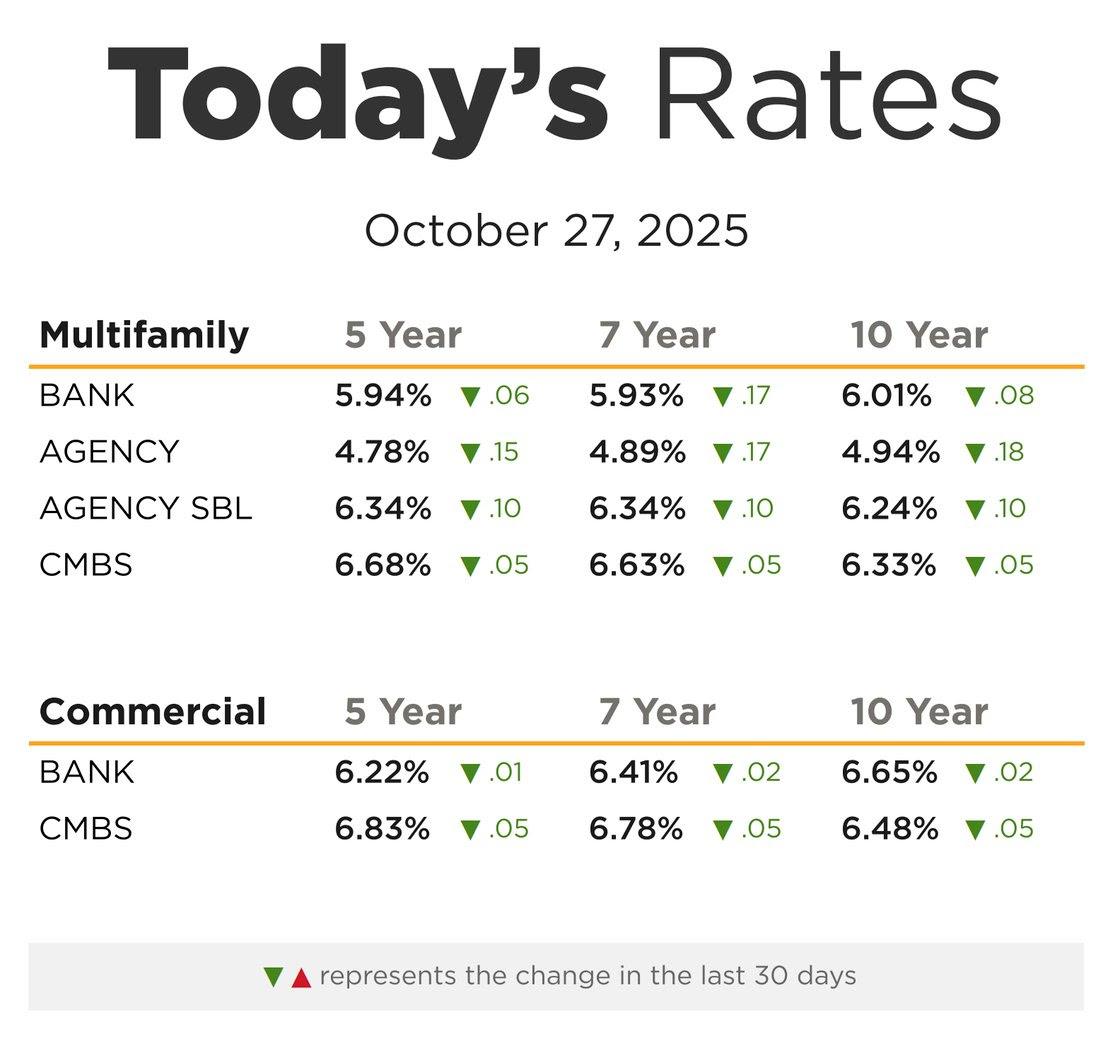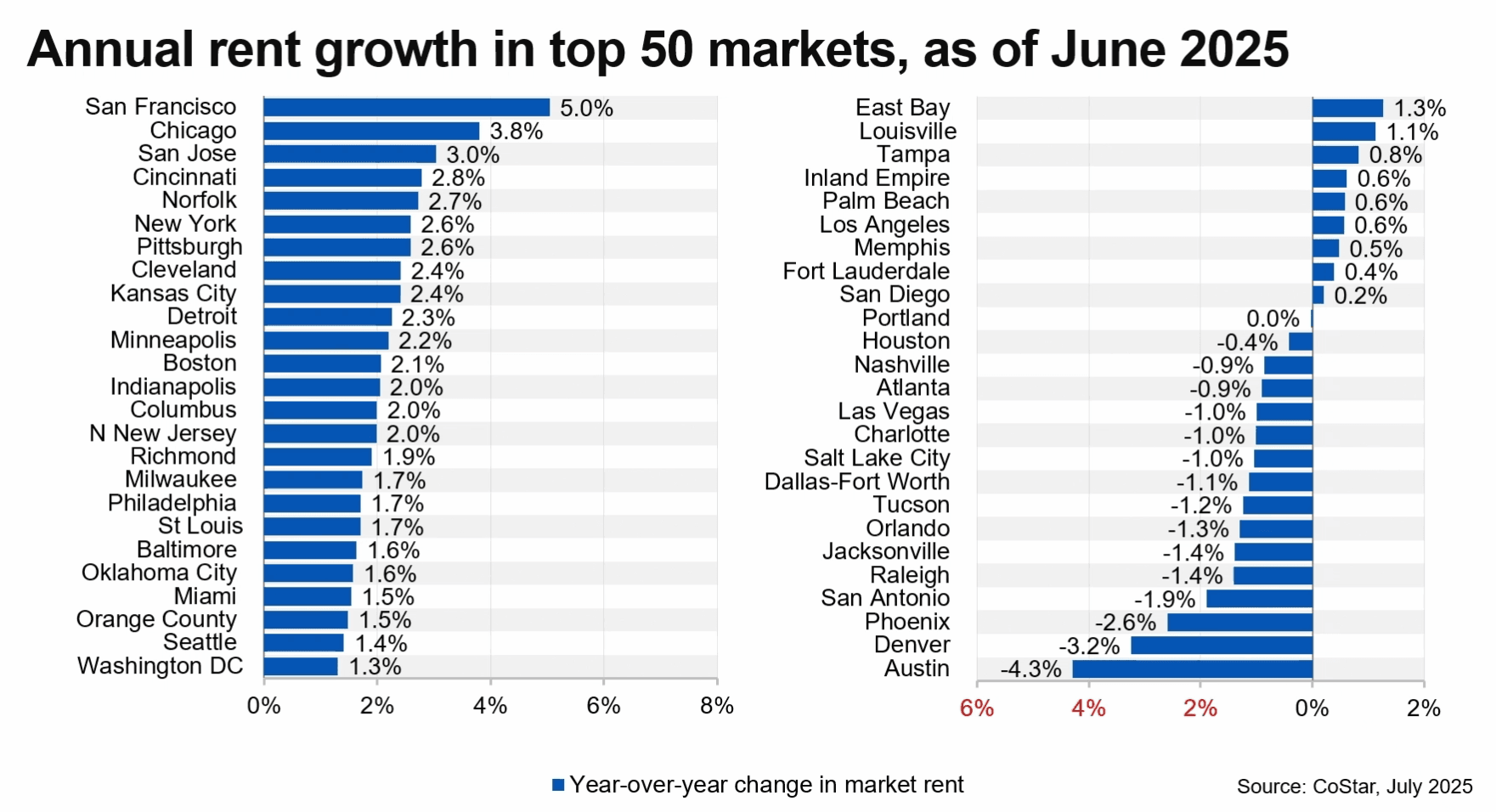Let’s start with the big question: How have higher interest rates impacted the multifamily sector?
Jeremy Morton: The interest rates have a direct effect on pricing and how buyers underwrite buildings. Sales activity has tightened. It’s more important than ever for buyers to have a good relationship with lenders, whether those lenders are local or national.
I did a handful of valuations in the spring in which interest rates were almost a point lower than where they are today. Those were brought to market and we slowly saw the interest rates tick up. Obviously, that has a correlation on pricing. There is a gap between buyer values and seller expectations. That’s why multifamily sales were slower in July and early August.
From what I understand, though, you have seen signs that we might see at least a small increase in sales activity in the coming months.
Morton: It is deal-specific. But in the last few weeks, we have seen an uptick in buyers interested in seeing buildings for sale and writing offers. That also has to do with sellers correcting their expectations. We have seen a few price reductions in listings in the last month. Buyers are active. It’s all about bridging the gap on the pricing.
We are still putting deals together. But things are moving a little slower. In terms of financing, it is taking more time to get everything lined up. No one is just slamming the financing together. Everyone is spending more time and due diligence on the front end, which is the key to getting deals done.
Activity is still solid, but there is a little more hesitation, a little more going over deals with a fine-tooth comb. Instead of touring a building and making an offer that afternoon, buyers might spend a solid week reviewing the deal with brokers and lenders, checking the numbers.
Are you seeing that gap between what buyers expect to pay and sellers want to sell for starting to tighten?
Morton: I definitely am. Previously as brokers, we could market these properties on future rental growth. We can still do that, but it has to check out on current cash flow. Six months ago, as long as buyers were breaking even on their current cash flow, that was fine. Now we need a little more cushion. Some lenders are requiring nine months of reserves to make sure there aren’t any delinquencies.
We are trying to be more transparent with everyone today, sellers in particular. Before sellers could shoot for a higher number and hope there would be a buyer who falls in love with the building. Today, you need to be more careful on how you underwrite buildings, otherwise you’ll be left with a stagnant building that won’t sell.
In the late spring and early summer, we had honest talks with sellers to help bridge that gap.
How strong is leasing activity in that sector? Interest rates haven’t slowed leasing demand, right?
Morton: Leasing is doing well. The new-construction multifamily buildings that I have been watching have been leasing out quickly with little to no concessions. The units with a greater number of bedrooms take a little longer to lease. There’s just a smaller number of renters looking for that size of a unit. But the one-bedroom and two-bedroom units are renting quickly while rental rates have gone up a little bit. Units are not staying vacant for long.
Back to sales activity. Are buyers and sellers waiting for some stability when it comes to interest rates? Are they waiting for the Fed to stop tweaking its benchmark rate?
Morton: That is the hope. I’ve talked to a good number of buyers. They want to buy right now. In their mind, they are confident that interest rates will go back down to some degree. When they go down, cap rates will follow. If they can buy at a higher interest rate and if they cover all their expenses and have some sort of return that they are comfortable with, they are happy. They are confident that in 12 months or so, if rates go down, the value of the property will go up. It is all about the relationship between interest rates and cap rates.
The multifamily sector has been one of the strongest commercial real estate performers for a long time. What are some of the reasons for this?
Morton: In Chicago, there is a great inventory of multifamily properties. But we still have not been able to keep up with rental demand. The higher interest rates have kept some people from buying single-family homes. There were people who planned to buy a home but instead are renting because rising interest rates makes buying a home too expensive. They are deciding to rent longer than they would have otherwise. Because there is less turnover with available rental units, there is a growing demand for apartments. Lenders are putting units up for rent and sometimes getting 20 or 30 people who want to rent that space.
As we saw through COVID, people put a focus on where they live. They pay their rent on time. More people are working remotely. They are in their homes longer during the day and they are prioritizing where they live. If they are struggling financially, they do everything they can to pay their rent first. Collections are high. Lenders are friendly when it comes to multifamily. They like the sector, too.
Source: Looking for signs of a sales boost in the multifamily sector
Receive Market Insights
Periodic analysis on rents, pricing, cap rates, and transaction activity across Chicago and key suburban markets.



